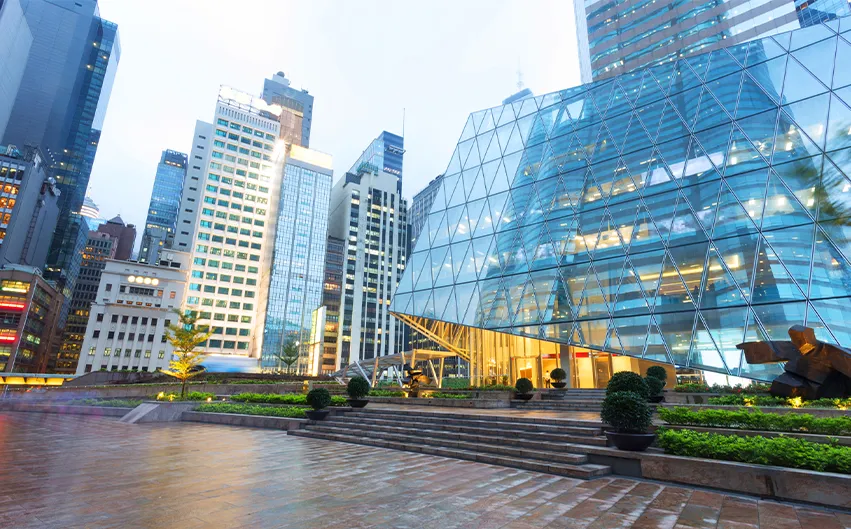In the last decade, the global community has been on the receiving end of incessant whiplash, with political upheaval, social unrest, and economic depression being its defining attributes. India, in defiance of the ubiquitous international disarray, has emerged as one of the strongest economies in the world. Within a quarter of a century since its Independence, the country has successfully placed itself as the fifth in the international hierarchy of economic superpowers.
Table of Contents
Owing to the country’s growing working population, liberal economic policies, democratic heritage, and consequential stable socio-political climate, it has attracted massive foreign investment in recent years. With the international spotlight primed on the republic, the government has worked tirelessly to provide a robust infrastructural framework, with the real estate sector working synchronically to provide an ultra-modern built environment.
Amidst an ambience of economic uptick, it is the commercial segment of the real estate industry that has been witnessing impressive growth. With the great return of the workforce to the offices, the demand for office spaces in the country has been on a pronounced upswing. The contemporary Indian contexture is therefore illustrative of a quintessential investment ecosystem for commercial real estate.
Let us discuss in detail why investing in the commercial real estate sector is an astute endeavour certain to yield promising returns, particularly in the contemporary Indian market.
Favourable economic climate:
The Republic of India’s development saga is well-known, with the country being one of the dominating global economic players. Projected to be a US$ 5 trillion economy by 2025, the country has showcased the unparalleled potential for its future. The recent rapid infrastructural development, especially in Tier-2 cities coupled with an economically benign framework, has made the country a preferred destination for many international businesses and IT giants. The fact that the country has the world’s largest youth population with a highly skilled and dedicated workforce only serves to further render the country a thriving investment locale.
Additionally, it is an indisputable fact that the pandemic has triggered a structural shift in the manner in which the global economy functions, with substantial reverberations in the commercial sector. The growing number of startups, with India placing third internationally when it comes to unicorn companies and the new-normative hybrid work culture, has led to an augmenting demand for innovative and flexible office spaces.
The previous year witnessed not only a new burgeoning demand for modern workspaces, with coworking spaces gaining unforeseen momentum, but also a return to workspaces after the pandemic. The corollary of this growing demand is evident in a report by JLL highlighting the 3.1% surge in net absorption for office spaces in 2022 compared to the average occupancy five years pre-pandemic. The market trends clearly illustrate investing in the commercial real estate market right now would be an opportune move on the part of discerning investors.
A reliable and strategic investment:
A prudent investor recognises the importance of possessing a diversified portfolio with the addition of asset classes that are relatively resilient to tempestuous market forces. Commercial real estate is one such flourishing asset class that not only has an innate value but also has an inherent appreciating characteristic.
Commercial assets add a source of steady cash flow for the investor by the virtue of being a high-yielding asset. This is because not only are commercial properties usually leased for a minimum of five years but the lease agreement usually includes a clause for steady appreciation of rental value. A report by Anarock states how in metropolitan cities, rental yield for offices usually increases by 6%-8% yearly, as opposed to 2.5% to 3% in residential spaces.
Further, commercial investments on average do not incur furnishing expenses, as usually the company that leases the space furnishes it, as per their own vision and branding needs. Add to it the fact that leasing commercial spaces usually leads to a hassle-free payment mechanism, they are slowly evolving into a sophisticated investment choice.
Unfettered by the recent collapse of the crypto and financial market, real estate also provides a reasonably lower-risk investment. A tangible source of investment, as opposed to other financial assets like stocks and bonds, it acts as a secure source of passive income, and one whose value will invariably appreciate over time.
A propitious policy environ:
The trailblazing economic growth of India has translated to a prospering investment market, with the real estate sector receiving private equity investment of a colossal US $5.1 billion in 2022. A host of government initiatives, including the relaxation of regulations governing Foreign Direct Investment has culminated in the country receiving a whopping US$ 83.57 Billion in FDI in 2022.
The government’s tenacious efforts to foster a robust infrastructural fabric are reflected in various urban development programmes such as the Smart Cities Mission, and Atal Mission for Rejuvenation and Urban Transformation (AMRUT). Aimed to develop a modern core infrastructure in Tier -2 and Tier-3 cities, the initiatives have served to provide a fertile environment for corporates to set up business and manufacturing units in the country.
Further, the establishment of the Real Estate Regulatory Authority has ushered in an era of transparent dealing in the real estate sector in India. Assuring a convenient mechanism of buying and selling properties, with no hidden costs has instilled confidence in both domestic and foreign investors.
One of the most sought-after locations for real estate investment in India today is the emerging business district of Sohna. The town today boasts a sophisticated and modern infrastructure, with seamless connectivity to the industrial and commercial hubs of the Capital and the Millennium City. Not only that, the government has undertaken numerous development projects such as the extension of Rapid Metro and IMT Sohna to further the viability of the locale as an investment destination.
The main Sohna Road in particular grandstands as a thriving residential and commercial catchment area, attracting many multinational conglomerates to shift their base to this new micromarket. Manoeuvring all the benefits the country boasts of, Sohna provides an ideal investment opportunity to develop a steadfast and high-yield portfolio. The affordable entry prices in the market, as opposed to the vastly saturated market of Delhi-NCR, coupled with its locational advantages posits Sohna commercial real estate as the most attractive and judicious investment option.








